Photographing hot air balloon festivals is one of my favorite pursuits. Hot air balloon photography blends the excitement of adventure with the beauty of the skies, creating opportunities for amazing, colorful shots.
The Albuquerque International Balloon Fiesta is one of my go-to events for hot air balloon photography. It’s one of the best events in the world and provides a spectacular display of color and movement—a true photographer’s dream.
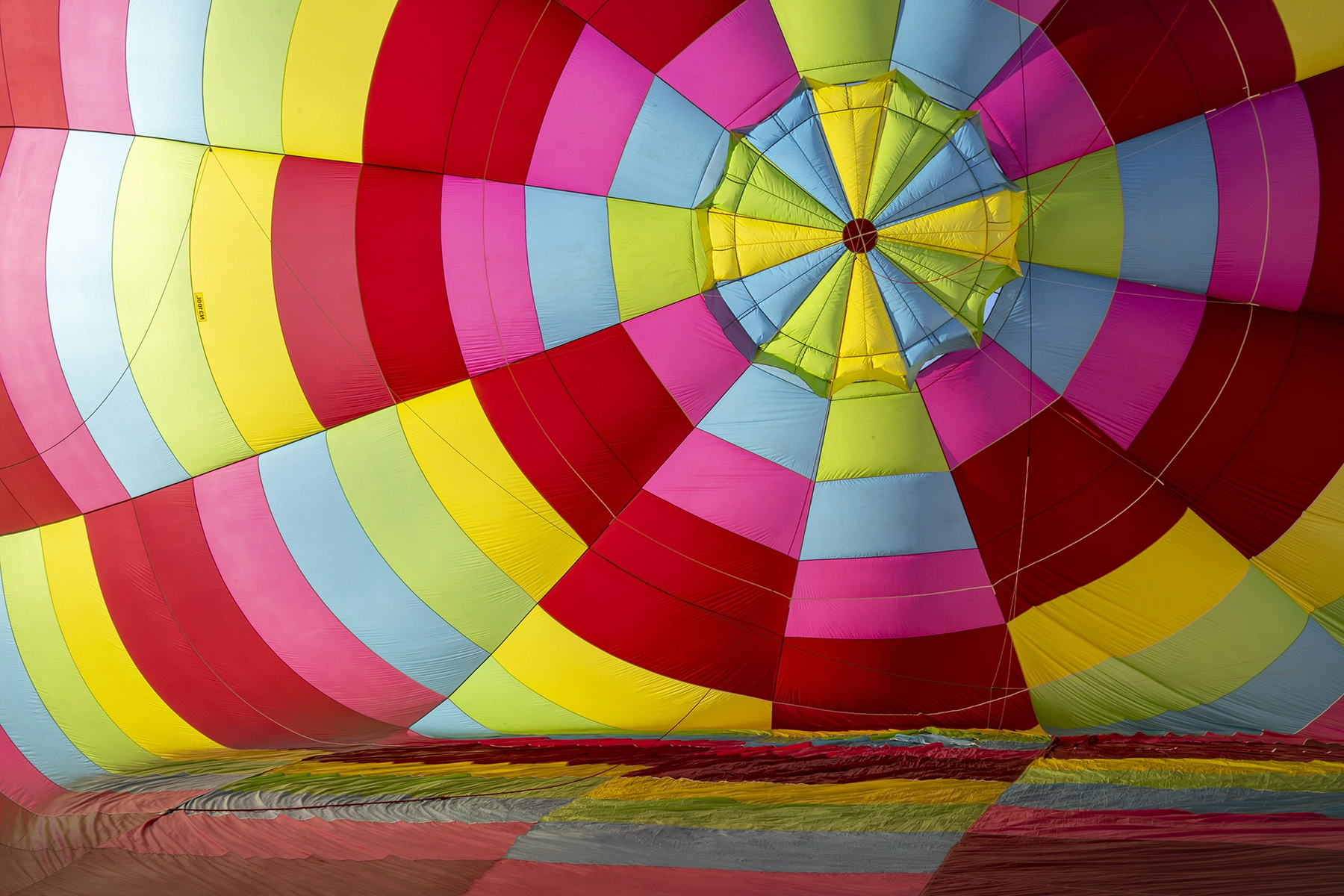
But getting the perfect shot takes more than just pointing and clicking. It requires careful planning, knowing my gear, and proficiency in essential techniques.
In this balloon fiesta photography guide, I’ll share practical tips from my experience photographing hot air balloons. From understanding camera settings to mastering composition, I’ll help you capture stunning images at your next hot air balloon show.
What You’ll Learn in This Post
- Plan Your Shoot: Research events, arrive early, and prepare my gear.
- Use the Right Lenses: Consider the Tamron 28-300 Di III VC for versatility, the 50-400mm VC for super telephoto reach, and the 17-50mm F4 for ultra-wide shots.
- Master Manual Settings: Adjust exposure, shutter speed, and ISO for dynamic shots.
- Compose Creatively: Use angles, leading lines, and the rule of thirds to compose my hot air balloon photography shots.
- Capture Color and Light: I rely on sunrise light, polarizing filters, and slight underexposure to highlight vivid colors.
- Post-Process with Care: Refine colors, contrast, and details in editing.
By Guest Contributor Ken Hubbard
Preparing for the Balloon Fiesta

Preparation is everything when photographing a balloon fiesta.
- I start by reviewing the event schedule to ensure I catch key moments. Understanding the event layout helps me position myself strategically for better angles and diverse shots.
- I make it a point to arrive early for the best vantage points, especially for iconic events like the “Dawn Patrol” and the “Mass Ascension.”
- Managing crowds is part of the experience. Planning ahead helps me navigate the scene and secure ideal shooting spots.
- I also dress for the weather and pack essentials like water and snacks. Staying comfortable means I can focus on capturing stunning shots.
Essential Gear for Hot Air Balloon Photography
Having the right gear makes a significant difference. Here’s what I never shoot without:
- A mirrorless camera with manual controls for precise adjustments.
- Wide-angle and telephoto lenses: The wide-angle captures expansive scenes, while the telephoto is perfect for close-ups and details.
- A sturdy tripod for stability during low-light conditions.
Best Lenses for Hot Air Balloon Photography
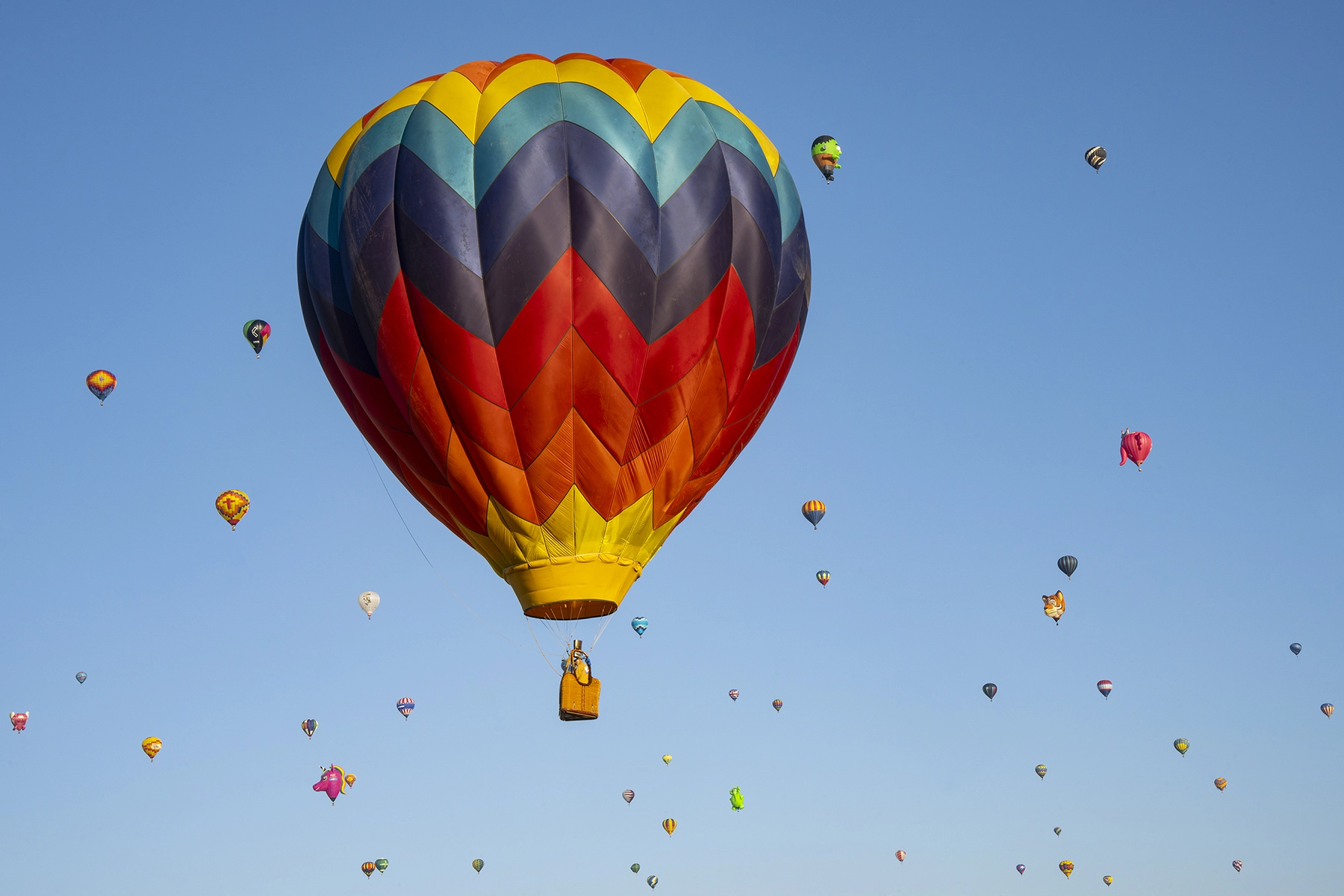
Selecting the best lenses for balloon festivals is essential for capturing breathtaking balloon shots, whether you’re photographing them up close or floating high in the sky.
While an all-in-one zoom lens offers the flexibility to shoot wide-angle scenes and zoom in on distant balloons, sometimes carrying additional specialized lenses can elevate your photography even further.
Depending on my creative goals, I often pack a combination of wide-angle and telephoto lenses to ensure I capture every detail, from sweeping landscapes to close-up balloon textures. Here are my three go-to Tamron lenses for balloon photography and what makes each one invaluable:
- Tamron 28-300mm Di III VC VXD: The ultimate all-in-one zoom lens, this workhorse offers exceptional versatility. At 28mm, it’s perfect for capturing expansive views of the balloon launch field and the surrounding scenery. When it is zoomed to 300mm, the lens brings distant balloons up close, making it ideal for tracking balloons as they float in the sky. Its VC feature also helps maintain sharpness when shooting handheld. I used this lens for all the image sin this guide.
- Tamron 17-50mm F/4 Di III VXD: This wide angle lens is my top choice for capturing stunning landscapes and group shots. The 17mm focal length allows me to frame large balloon gatherings and colorful sky vistas with clarity and depth. Its fast aperture ensures sharpness across the frame, even in low light during early morning launches or golden hour ascents.
- Tamron 50-400mm F/4.5-6.3 Di III VC VXD: When I want to isolate balloons and capture details from a distance, this telephoto powerhouse is my go-to. Its long reach from 50mm to 400mm allows me to zoom in on individual balloons or showcase the patterns and colors on their fabric envelopes. The lens also excels in compressing distant subjects, creating dramatic, layered compositions of balloons dotting the sky. It is a perfect companion to the 17-50mm.
With these three lenses in my kit, I am prepared for every angle and distance, ensuring I can capture both the grandeur and intimacy of every balloon event.
Camera Settings and Techniques for Hot Air Balloon Photography
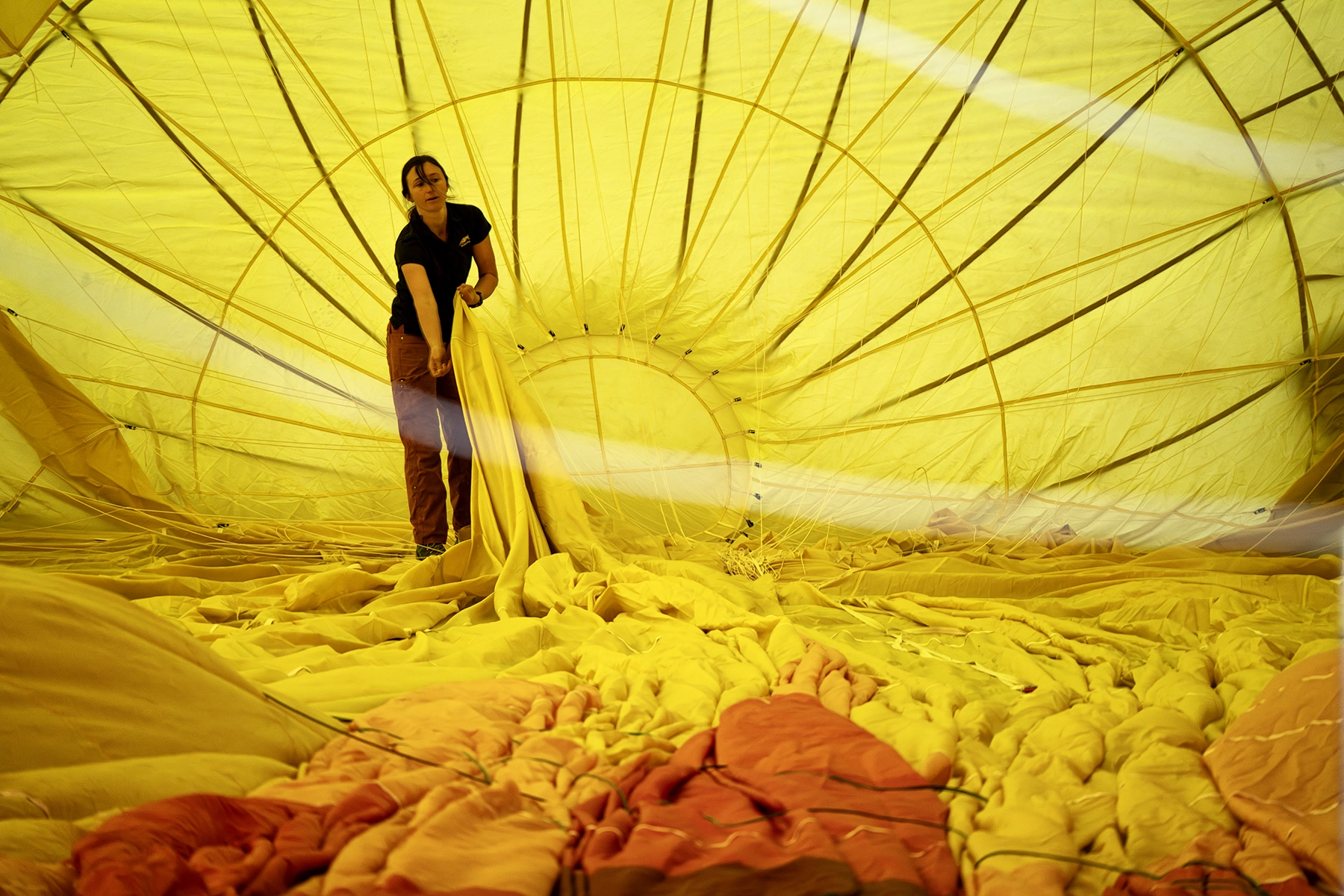
Mastering my hot air balloon camera settings is key to capturing the best shots:
- Aperture: I adjust this for a deep depth of field, ensuring both balloons at varying distances and background are clear.
- Shutter Speed: A fast shutter freezes the action—perfect for ascending balloons.
- ISO: I adapt my ISO to changing light conditions, keeping it low to reduce noise.
- Burst Mode: This captures quick sequences, great for dynamic shots.
- RAW Format: I always shoot in RAW for maximum flexibility in post-processing.
Balloon Festival Photography Tips
TIP 1: Composition and Perspective
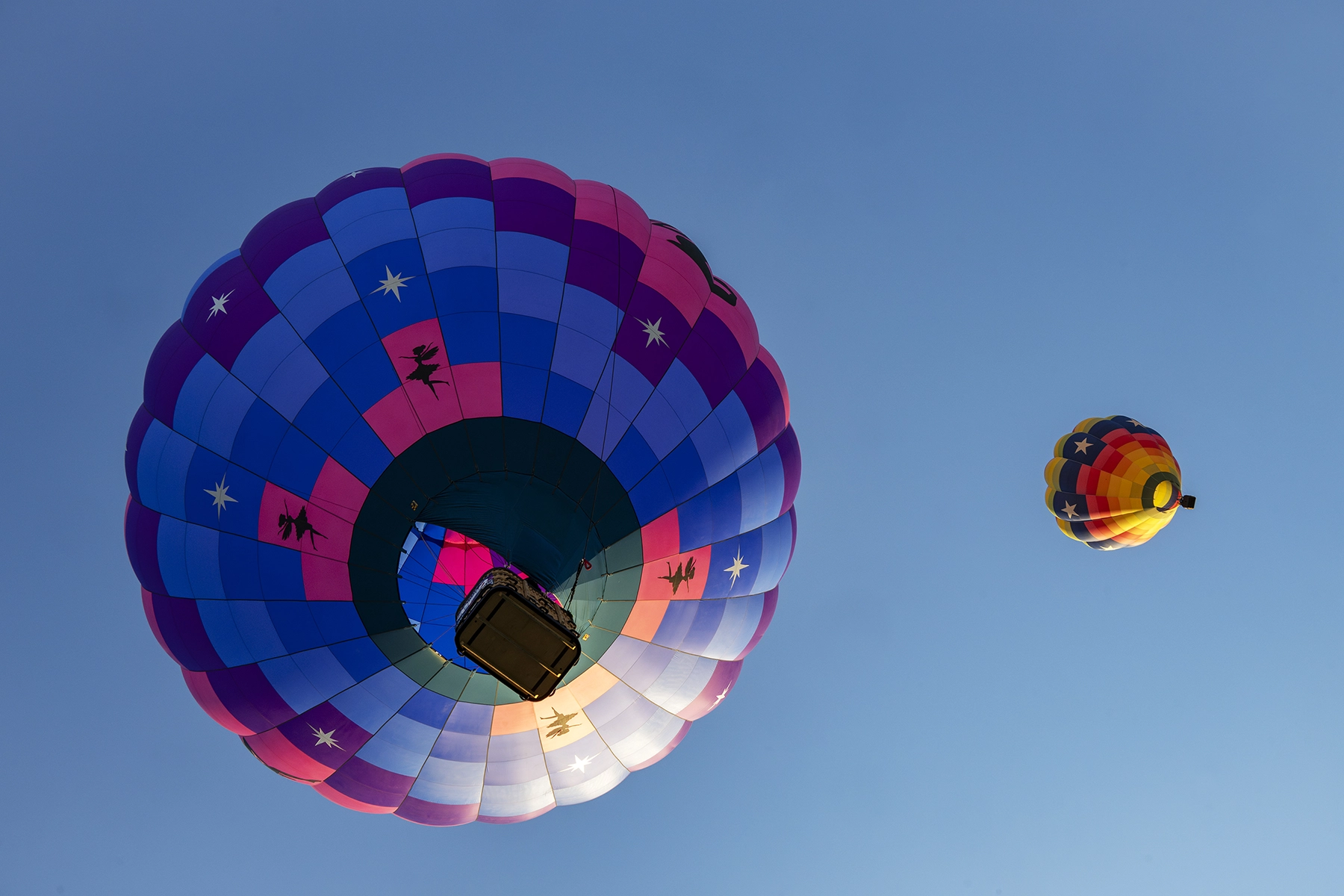
Creative composition can make or break a shot. I rely on these hot air balloon composition tips:
- The Rule of Thirds: Use the rule of thirds to create balanced compositions. It helps me frame balanced images that draw the viewer’s eye. Place the balloon off-center for a more dynamic shot and consider including foreground elements like people or trees to add depth
- Unique Angles: Don’t just shoot the balloons straight on at eye level. Capture them as balloons fly overhead, get low to the ground and even try to find an elevated area or possibly go up in one of the balloons. Shooting from the ground or incorporating the crowd adds scale and interest.
- Leading Lines: These guide the viewer’s eye and add depth to my compositions.
- Get Close and Shoot into the Balloon: As the handlers fill their balloons with air get up close and shoot into the partially filled balloon. I like to have the sun behind and to the side of the balloon so that the fabric glows but still has some different tonal ranges from side to side.
- Capture the Inflation Process: Document the entire process of the balloon being inflated and the workers helping to inflate them. These shots can be just as captivating as the flight itself and tell a story.
- Capture the Details: Don’t forget to zoom in on the details, such as the colorful patterns of the balloon fabric, the burners, and the reactions of the crew and passengers. These close-up shots can tell a story.
TIP 2: Capturing Vibrant Colors
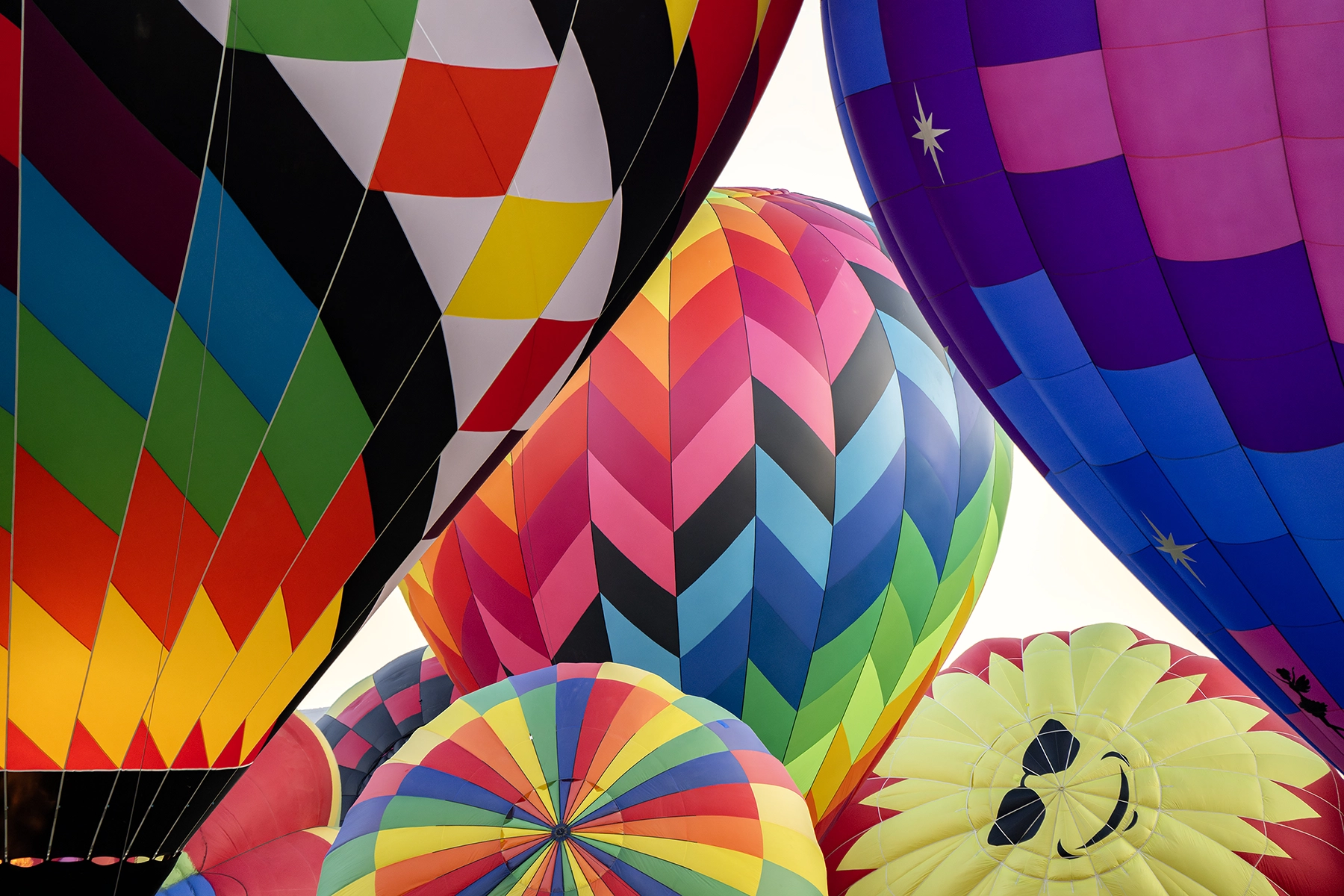
Hot air balloons are known for their bright colors, and I use several techniques to capture them at their best:
- Natural Light: I shoot during sunrise for soft, vibrant colors.
- Polarizing Filters: C-PL filters reduce glare and enrich colors.
- Slight Underexposure: This trick makes colors pop.
- Close-ups: Focusing on patterns and textures adds variety to my shots.
TIP 3: Best Times for Hot Air Balloon Photography
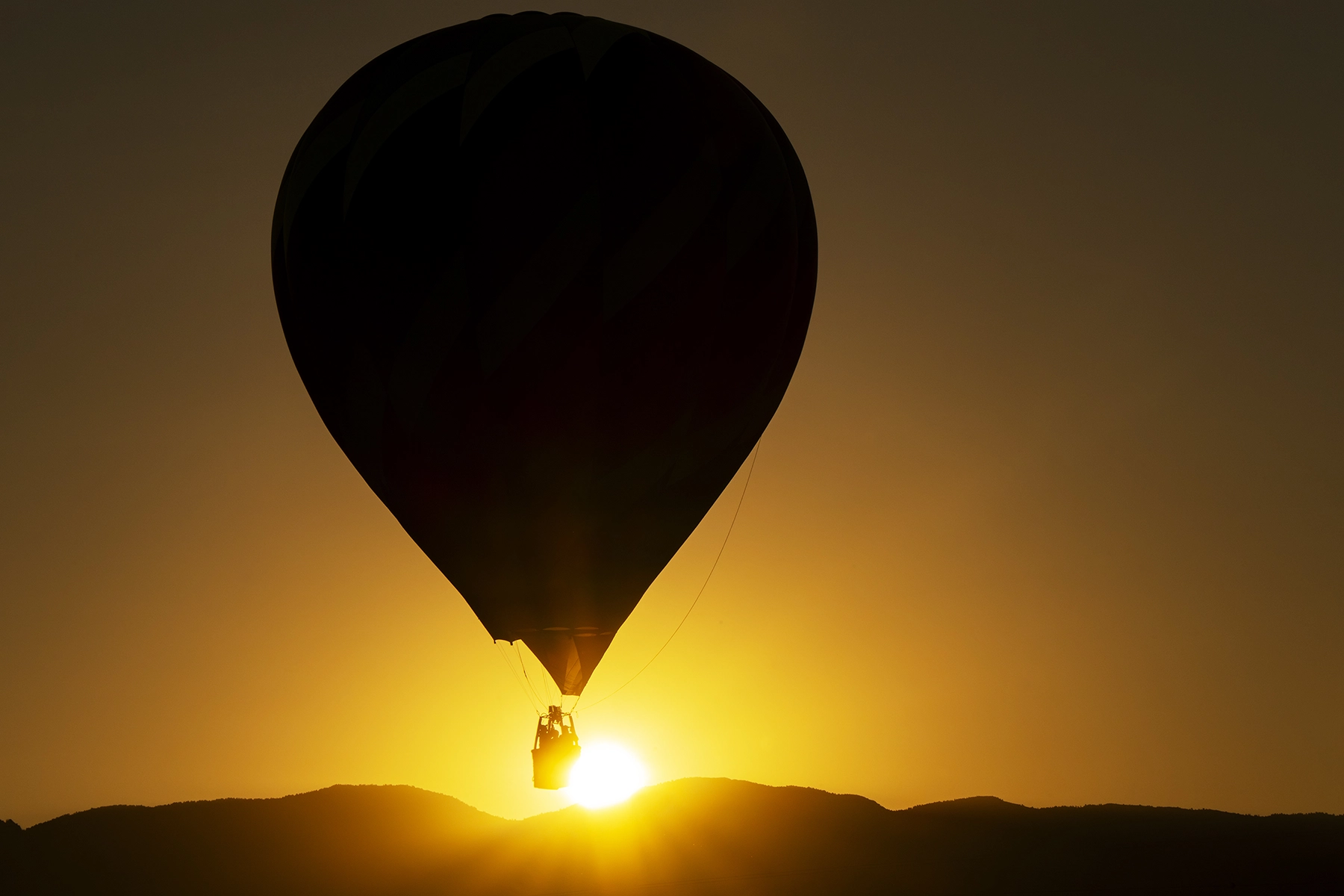
Timing is crucial for balloon photography. Different times of day offer unique opportunities:
- Create dramatic silhouette images at sunrise: As the sun rises above the horizon, you can position yourself so the balloons taking off are in between you and the sun. When the balloon is close to the sun, meter for the brightest spot closest to the sun (not the sun itself). This will turn the balloon into a perfect black silhouette and the sky into a brilliant yellow.
- Early morning: Offers soft, diffused light that flatters balloon colors to create a magical glow during balloon ascensions.
- Late afternoon and dusk: Warm tones and long shadows add depth and drama. It is also a great time to create stunning silhouettes. You may also find more dramatic skies at this time.
- Night: Balloon glows are a highlight for me. Capturing the vibrant, illuminated balloons against the night sky is pure magic. I use careful exposure settings to showcase the colorful glow while retaining detail.
TIP 4: Dealing with Weather and Crowds
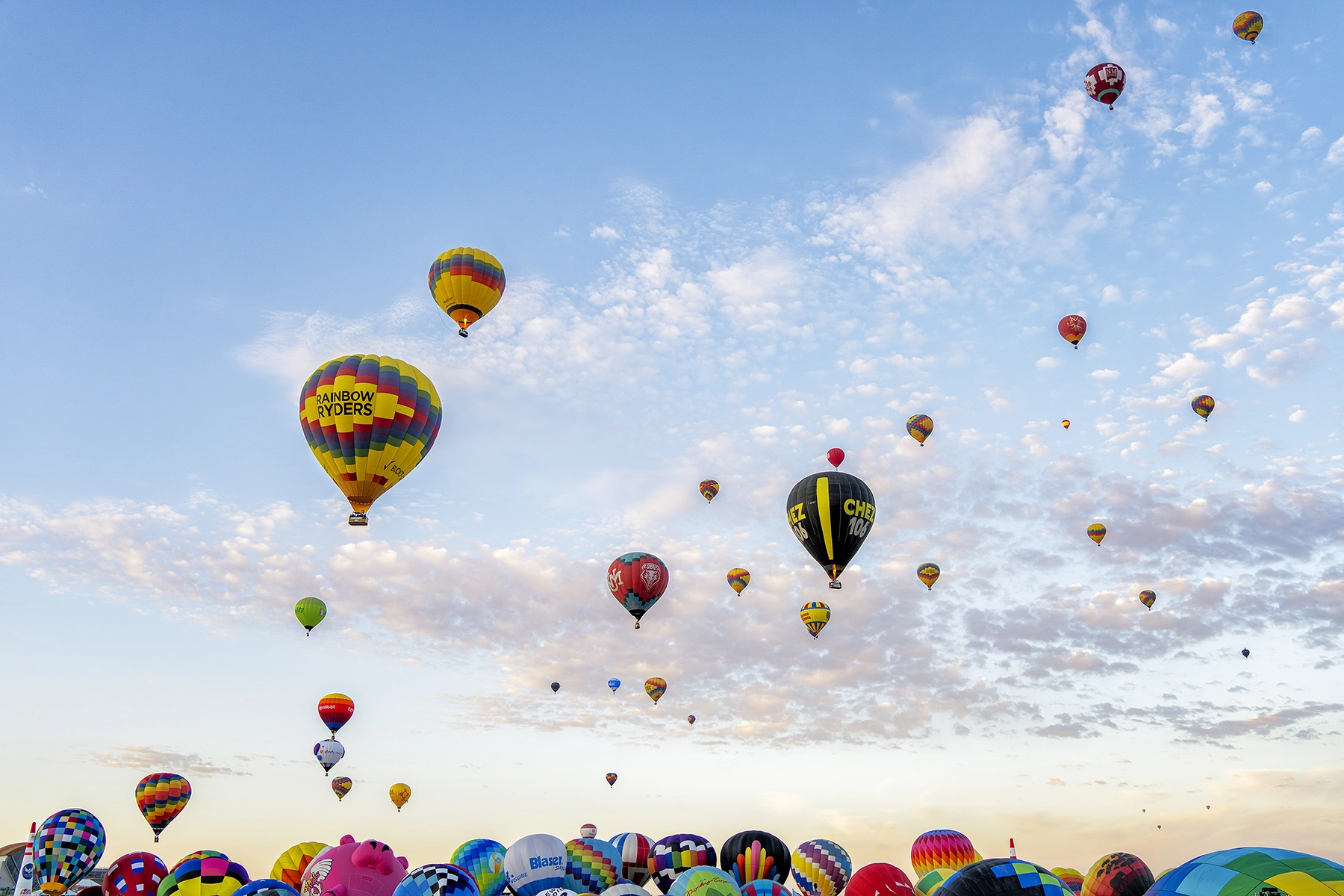
Weather and crowds can be challenging, but preparation is key:
- Check Forecasts: I always know what conditions to expect.
- Get there Early: Get to your chosen location early to secure a good spot. This allows you to set up your equipment and capture the balloons as they inflate and take off.
TIP 5: Safety and Etiquette
Respecting safety guidelines is essential:
- Keep a Safe Distance: I stay clear of balloons and equipment.
- Follow Event Rules: Respecting balloonists and other photographers fosters a positive experience.
TIP 6: Post-Processing Tips for Hot Air Balloon Photography
Three quick editing steps can elevate my photos from good to great:
- Exposure Adjustments: I fine-tune to highlight details.
- Saturation Boost: A slight increase makes colors pop.
- Contrast: Enhances depth and clarity.
My Hot Air Balloon Photography: Capturing the Moment, Living the Experience
Mastering hot air balloon photography takes practice, but it’s incredibly rewarding. As a professional photographer, I enjoy experimenting with techniques and pushing my creativity.
However, I always take time to enjoy the experience beyond the lens. Being part of the crowd at a balloon festival is an amazing experience filled with excitement. Hearing the roar of burners, feeling the warmth of the sun, and watching the colorful balloons rise into the sky is magical. It’s a moment to soak in the joy, share the experience with others, and enjoy the beauty beyond the lens.
And ultimately, sharing my passion through great photos is what truly elevates the journey.
Find these lenses and more your local authorized Tamron dealer or at the TAMRON Store today.
